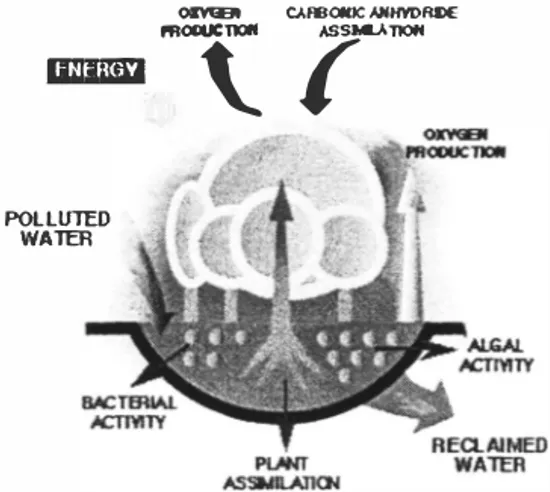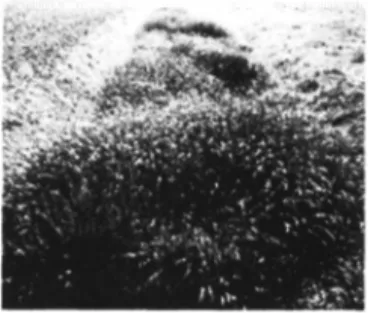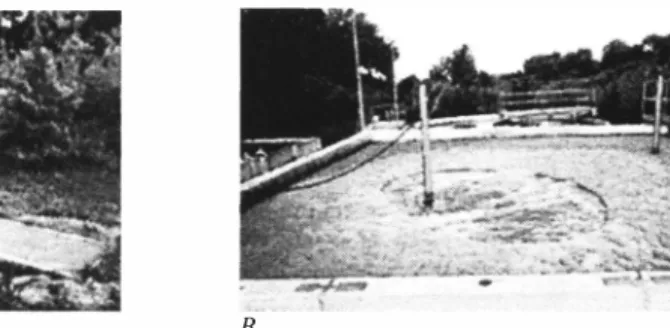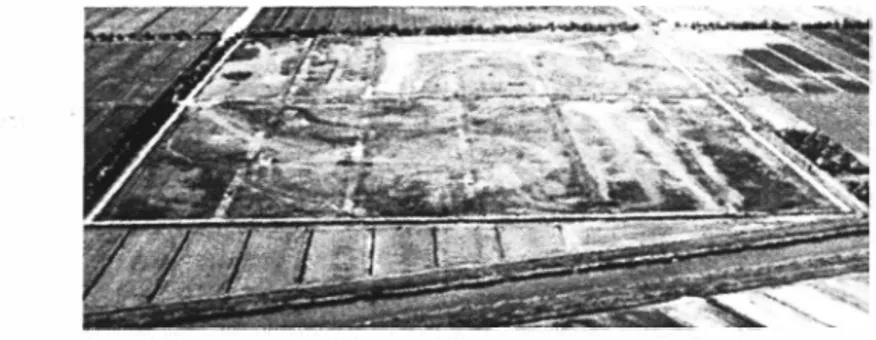Kalmar ECO-TECH '05 and
r The Second Baltic Symposium on Environmental Chemisty
KALMAR, SWEDEN, November 28-30, 2005
WATER RECLAMATION &
PHYTO -TECHNOLOGIES
Maurizio Giannotti
International consultant, Italy
ABSTRACT*In this paper conventional and innovative phyto-technologies, applied on different kinds of polluted waters to obtain their safe reuse, are showed. Today, the last frontier of environmental recovery in the world is: Water Reclamation. Most important targets of water reclamation are: recover and reuse wastewaters in safety, freshwater aquifer recharge, public health protection, and new economic viable source. There are a lot of technologies to treat different kinds of wastewaters (urban, industrial, zootechnical, etc), but conventional technologies able to treat, recover and reuse wastewaters in the same time, are very few and so expensive that the cost of recovered water is no sustainable by public administrations; overall in the developing countries in Africa, Asia, South and Centre America (F AO-WHO).
In the latest years, phyto-technologies proved their efficiency in the wastewater reclamation and their cheap and easy way to be built and maintained. The phyto-technologies experiences shown in this paper are applied on polluted waters from industries and agroindustries, pig feedlot, towns, and polluted water of rivers and/or lakes. The paper is completed with analytical data and results; compared with national and/or international (F AO-WHO) law limits for reclaimed waters; and building and maintenance costs, compared with conventional activated sludge systems.
We speak about projects financed by public administrations or international organizations (F AO-European Union) and realized to reclaim and reuse treated wastewaters using conventional and/or advanced phytoremediation technologies. All this has opened a new cheap and easy way, to reuse in safety treated waters, to protect environment, and to control fresh water pollution.
1 INTRODUCTION
1.1 Freshwater and environmental pollution
Water is the par excellence solvent and is the main vehicle of all the other compounds which are useful (bases, acids, sugars, etc.) to sustain the life of plants, animals and people. There is 97.5 %of sea water and only 2.5 % of fresh water in the world but not all the fresh water is available for human needs (Figure 1 and 2) [16, 18, 19]. Of this 2.5 % of freshwater, 70% is "blocked" water (North and South Pole, perennial glaciers) and the remaining 30% is available for the "life" present all around the world; but of this 30% available most of it is either difficult to reach or is used by the many forms of life (vegetal or animal) on earth; so only a small part is available to man and his activities. Nevertheless, this small percentage has always satisfied humanity's needs.
Kalmar ECO-TECH
·os
andThe Second Baltic Symposium on Environmental Chemistry KALMAR, SWEDEN, November 28-30, 2005
SEA WATER 97.5 %
TOTAL
FRESH WATER 2.5 % FRESHWATER
2.5 %
70 % 30%
Glaciers & Snow Rivers, Lakes &
...
Underground Waters NOT AVAILABLEAVAILABLE Figure 1. Subdivision of fresh and sea water. Figure 2. Availability of fresh water. All over the world, during the last 50 years, large amounts of waste products from human activities have been and are being released into the environment; and today are the first cause of fresh water pollution. Nowadays it is widely accepted that water is the main problem in several parts of the world in relation to food security and health.
Global projections show that in the twentye- first century most of the world population will be facing severe water crises in terms of quality, availability and supply; and this will be a factor in depressing people's living standards and retarding the economic and social developments of most developing countries around the world. Today it is universally recognised that the exploitation of water resources is the main cause of disaccord and wars between populations (The Middle East), and that the use of polluted water in agriculture is the main cause of food contamination and the spreading of infections and epidemics in poorer countries. That is why in Africa, Latin America or in the ex-USSR countries there is a progressive deterioration in the quality of life and the health of entire populations who live off the land.
Previews and estimations made by world organisations like the F AO and UN show how, in the 21st century, populations in many parts of the world will be decimated due to both the poor quality of drinking water and contaminated food. These factors will be the cause of a " form of underdevelopment" brought about by the drastic reductions in the standard of living in many areas of the world, with consequences at an economic and social level which will no longer be resolvable by the methods and rules that are being adopted today; It is certain that the richer countries of the world will be profoundly effected.
World organisations like the AWWA, OMS, FAO and WHO [I, 3, 23, 25, 26, 27, 28] have been working on environmental restoration problems for years and. above all, on the developments of depuration techniques for sewage which are both safe and cheap. It is for this reason that considerable interest has been shown towards all of the technologies that can treat polluted waters in a way that is natural, simple and has low energy consumption. Phyto depuration has arisen among these as it is a natural system of depuration which makes the most of the absorption capabilities of vegetal organisms such as algae and plants.
The experiences carried out over the last decade have shown that not only can excellent results with minimal investments be obtained, but that these results are so stable and constant
Kalmar ECO-TECH '05 and
The Second Baltic Symposium on Environmental Chemistry KALMAR, SWEDEN, November 28-30, 2005
over time that the treated water can be reused in complete safety [2, 6, 7, 8, 16]. In this paper are presenting innovative phyto-depuration technologies with the aim of treating polluted water and for its safe reuse in agriculture and/or other uses (industry, etc).
2 WATER RECLAMATION
By "Water Reclamation" we mean all the biological and/or chemical processes able to treat, recover and reuse polluted waters, in safety [2, 12, 14, 16],
2.1 Wastewater management in the world
Every year large amounts of waste is released into the environment and a significant number of pollutants remain in the environment causing widespread soil and fresh water pollution. The use of municipal and/or agro-industrial treated effluents in agriculture has gained prominence and in some countries is integrated into national water policies, particularly in the water-scarce Middle Eastern countries and other countries located in arid and semiarid areas. This fact heightens the need to find solutions to meet the problems of food security with the availability and good quality of water.
International organizations (as FAO, WHO, etc) have always paid great attention to wastewater treatment and its implications when used for sustainable agricultural development with a view to water quality and has studied the use of drainage water for irrigation, wastewater treatment and its reuse in agriculture, and water quality and health, WHO, F AO, US-EPA have also edited several publications on the treatment and safe use of sewage for crop production and aquaculture [23, 25, 26, 27, 28].
Recent new biotechnologies (like advanced phyto-depuration systems) have opened up great opportunities to control fresh water pollution, principally by treating different kinds of wastewater (civil, industrial, zootechnical, agroindustrial), to obtain water which may safely be used for irrigation. Phyto-depuration projects have been carried out in several countries and are the bases for an innovative kind to manage the effluents.
In 200 I, F AO in collaboration with the Mexican Government developed a phyto-depuration project to treat pig feedlot sewage and recover it in the same feedlot for non potable uses; the project is described in full later on in this manual.
2.2 Targets of water reclamation
Interest in wastewater reuse began during the 80's when significant flows of treated wastewater became available and reclamation processes for agricultural and/or industrial purposes began to be developed.
The reuse of reclaimed wastewater requires: - public health protection,
- meeting water quality criteria,
- water management and public acceptance and participation.
- and lastly but of no lesser importance, water reclamation must be economically and financially viable.
Kalmar ECO-TECH '05 and
The Second Baltic Symposium on Environmental Chemistry KALMAR, SWEDEN, November 28-30, 2005 Table 1. Founts of polluted water and the reclamation target [12, 14, 20},
Polluted fount Water reclamation targets Industries
Urban Agroindustries
Zootechnics Polluted surface water
Industrial purposes Irrigation of public parks
Agriculture Urban non potable reuse Freshwater aquifer recharge 2.3 Reclaimed water quality
WHO, FAO and US-EPA have proposed several guidelines recommendations for reclaimed water quality; the following table shows limits of the most important biological parameters for its safe reuse in agriculture and as non potable water (Table 2 and 3) [16, 23, 25, 26, 27]. Table 2. Reclaimed water quality, limits used in agriculture.
Parameters WHO limits US-EPA limits
Fecal coliform 1,000 Colonies/ I 00ml I 00 Colonies/ I 00ml
Helminth e_g_gs I
Table 3. Reclaimed water quality for non potable civil utilization (International limits).
Parameters Quality Monitoring
Fecal Coliform None detectable in I 00 ml: Daily < 14/100 ml in any sample
Turbidity <2NTU Continuous
Chlorine Residual I mg/L minimum Continuous
BOD < 10 mg/L Weekly
H 6-9 Weeki
3 PHYTO-TECHNOLOGIES 3.1 The Phyto-depuration
Phyto-depuration or phyto-remediation is a natural biotechnology based on the capacity of vegetable organisms (algae, macrophytes, all other plants):
- to absorb inorganic compounds from the water or the ground - to collect and transform nutrients in living biomass
Figure 3 shows the main biological processes presents in the phyto-depuration treatment plants [2, 5, 6, 12, 16]. No vegetal species exist which can absorb, modify and/or digest organic compounds directly, without the fundamental intervention of bacteria. In a phyto depuration system, the sewage comes into contact firstly with the bacteria present inside the basin (bacterial activity) which break up the polluted organic substance in simpler organic
�(
r-Kalmar ECO-TECH '05 and
The Second Baltic Symposium on Environmental Chemistry KALMAR, SWEDEN, November 28-30, 2005
molecules like nitrates. phosphates and carbonic anhydride. These compounds are absorbed by the roots (plant assimilation); through the biological processes inside the vegetal cells, the plant reuses them to form new organic molecules (sugars, vitamins, amino-acids, etc). A similar absorption takes place in the lagoons where the algae reconvert the nutrients which are dissolved in the water into organic matter (algal activity). The sun's energy is a fundamental contribution in bringing about this result as the plant takes advantage of this energy thanks to chlorophyllous photosynthesis. At the end of this process the water will have lost its polluting substances and can be reused in the environment or salvaged and reused (reclaimed water). A fundamental observation is that during the phytodepuration processes, oxygen is a "discarded product" which is dispersed into the atmosphere, thus improving the local air quality.
01mi1B11 CJ.fllOJOC AIIIM>Rl>E
lllllllltl
POLLUTED WATER
Figure 3. Main biological processes in the phyto-depuration treatment plants.
3.2 Phyto-depuration market
Today, phyto-depuration represent the real alternative for the reclamation of wastewater and its reuse in agriculture for safe food production linked to a healthy human nutrition and environmental surface water quality management.
The phyto-depuration Industry is moving into several treatment markets: municipal; agroidustrial; zootechnical, and into the treatment of pollutants present in surface waters (rivers, lakes, etc). The latest marketing studies consider phyto-depuration as the new environmental frontier for environmental safety and preservation; and expect a market growth from the $29.5 million in 1998 to $370 million by the year 2005. This is a concrete, interesting and unique opportunity for developing countries to reclaim their own wastewater and reuse it in agriculture with sustainable investments [16].
Kalmar ECO-TECH ·os and
The Second Baltic Symposium on Environmental Chemistry KALMAR, SWEDEN, November 28-30, 2005 3.3 Main phyto-depuration systems
The current techniques of phyto-depuration can be classified according to the extensive or intensive methods employed, the prevalent vegetable species present and the general flow sheet:
GROUP I - Conventional phyto-depuration systems
Systems with rooted or floating macrophytes - FMS, FWS, HF, VF (4, 5, 6, 16, 17, 21, 22] GROUP 2 - Advanced integrated phyto-depuration systems
Integrated System of Phytodepuratione- ISP
Innovative mixed phytodepuration system with terrestrial seasonal and/or Evergreen plants and final pond (7, 8, 12, 14, 15, 16)
GROUP 3 - Constructed wetlands - CW
Extensive systems with several species of plants (3, 5, I 6, 17, 21, 24) GROUP I: Conventional Phyto-Depuration Systems
Conventional phyto-depuration can be classified further according to the type of hydraulic flow followed by the wastewater and/or the species of macrophytes employed:
I. Floating Macrophyte System (FMS) with free flow of water and its surface covered by Water Hyacinth or Lemna
II. Free Water System (FWS) with surface free flow water and rooted macrophytes in the floor of the channel
III. Subsurface Water Horizontal Flow System (HF) with water horizontal flow and rooted microphytes on the surface
IV. Subsurface Water Vertical Flow System (VF) with water vertical flow and rooted microphytes on the surface
I. Floating Macrophyte System - FMS
In this system the treatment consists in ponds where floating plants are allowed to grow. Many types of floating plants were used for this purpose (several authors): Water Hyacinth and Lemna (Figure 4) are the two conventional species of floating macrophytes used. A surface extension of I 0-15 m3 per inhabitant is needed to create an FMS plant.
II. Free Water System - FWS
FWS are made with channels or ponds where the water surface is exposed to the atmosphere while the submerged bottom soil is the support for the emerging rooted microphytes (4, 7, 8]. The plants used are rooted macrophytes like: Typha (Figure 5), Phragmites, etc. A surface extension of 5 m3 per inhabitant is needed to create an FWS plant.
FMS and FWS application limits:
The use of microphytes limits the plant efficiency only in the summer time; in winter the activity is 80 % lower.
Anaerobic processes present at the bottom of the sumps increase Ammonia and Fecal Coliforms centration in the outlet; a refining stage is required.
The high surface extension required limits the application to few inhabitants: from I O to a maximum of 1.000 inhabitants.
Kalmar ECO-TEC H '05 and
The Second Baltic Symposium on Environmental Chemistry KALMAR, SWEDEN, November 28-30, 2005
Figure 4. FMS example with Lemna Figure 5, FWS example with Typha
III. Subsurface Water Horizontal Flow System - HF
HF system is made with artificial sumps containing inert material with defined particle size distribution in order to assure a determined hydraulic conductivity; normally sands, pebbles and stones are used, This inert material is the support into which roots of the microphytes: plants like Typha and/or Phragmites Australis are commonly used, The water flow is horizontal (Figure 6), A surface extension of HF plant is 5 m3 per inhabitant.
Figure 6. HF -flow scheme.
IV. Water Vertical Flow System - VF
The configuration of VF system is similar to the previous HF system, The difference is that the waste water flows from top to bottom (vertical flow) through the filling material (Figure 7), and the water is poured at alternate time. This methodology with batch mode operation requires two parallel lines for each plant. A surface extension of 5 m3 per inhabitant is needed
to create an HF plant.
11
Figure 7. VF -flow scheme.Kalmar ECO-TECH · 05 and
The Second Baltic Symposium on Environmental Chemistry KALMAR, SWEDEN, November 28-30, 2005 HF and VF application limits:
The use of rooted microphytes limits the full efficiency only in summer time; in winter the activity is 80 % lower.
Anaerobic processes present inside the sump can increase Ammonia concentration in the outlet; a refining stage is required.
The unitary surface extension required, limits the application to few inhabitants (no more than 1 .000 inhabitants) and to seasonal activities such as camping sites, tourist villages, etc. For bigger applications the surface needed would be so spread out as to result a problem for the land availability and construction costs.
GROUP 2: Advanced Integrated Pbyto-Depuration Systems
The advanced phyto-depuration systems are new mixed biotechnologies where the phyto depuration is a stage of the full treatment.
The ISP technology
One of the more representative systems of APS is the patented biotechnology called Integrated System of Phytodepuration (ISP). In particular, ISP consists in the combination of three operative stages, as shown on Figure 8.
IN
A
B
C
2
t,
WAlfR RfCIACUUTIONOUT
Figure 8. Integrated System of Phytodepuration.
Stage A - screening of all the sewage in flow to remove solids, Stage B - biological treatment with conventional oxidation systems,
Stage C - basin of phytodepuration divided into two functional sections: I) phyto-depuration section with plants, seasonal or evergreen species; 2) lagoon with fish, where phytoplankton activity reoxygenates water.
At the end of the process, the effluent discharged can be reclaimed in agriculture, industrial requirements etc. The ISP guarantees the total absence of insects (mosquitoes, etc.) and unpleasant smells, so it can be installed in public parks or near houses and public places. Phytodepuration activity
The phyto-depurationn activity is guarantees by the presence of autochthonous and ever�reen plants, active in every period of the year - no macrophytes are used. ISP requires 0.5 m per inhabitant to guarantee the water reclamation limits.
In stage A, solids are separated (Figure 9). The primary treatments applied in the Stage A, are
the conventional systems normally used to separate the liquid phase from raw materials. Stage B is for biological treatment. The biological treatment has the function to convert organic molecules, dissolved in the wastes, into inorganic compounds (nutrients). Aerobic systems are
Kalmar ECO-TECH ·05 and
The Second Baltic Symposium on Environmental Chem istry
KALMAR, SWEDEN, November 28-30, 2005
the conventional biological treatment used [9, 1 0, 1 1, 13]. Stage C takes place in phyto depurationn basin (Figures JO and J l). The phyto-depurationn basin can be divided in two specific functional sections, e.g. a tank with authoctonous and evergreen species, and Lagoon with fish.
ISP can be applied on all climate conditions even with snow and frost. Temperature range is from - 10 up to 50°C. Capacity ranges from I 00 up to I 00.000 inhabitants.
ISP characteristics and advantages:
- Guarantee a constant and total efficiency for all the year. - Final water recovery and reutilization requested by the customer
- No problems of efficiency in winter time with snow and frost. Minimum temperatures should not be below - 10 °C.
B
Figure 9. Example of conventional technologies characterizing the ISP stages A and B.
A
B
C
Figure 10. ISP Stage C - Section view.
GROUP 3: Constructed Wetland The Constructed Wetlands - CW
For many centuries natural wetlands were used for the treatment of wastewater from villages and towns; in fact in most cases swamps were used as a natural basin into which wastewater accumulated before being let into a river. In the last few years this concept has totally changed and wetlands have considered pleasant, rather than unhealthy places (Figure 12).
Kalmar ECO-TECI I '05 and
The Second Baltic Symposium on Environmental Chemistry KALMAR, SWEDEN, November 28-30, 2005
CW is characterized by a large surface area, shallowness and a large volume, Their construction methodologies are generally simple and always have a positive impact on the environment Autochthonous vegetal species are employed so to allow their easy recovery and reuse by the human activities present in the same area, Today the CW is considered a valid alternative to water reclamation of:
treated wastewater from big towns
polluted surface water from rivers, lakes, etc
reconstruction of degraded territories polluted by sewage: environmental phyto remediation,
CW main advantages:
Construction and maintenance is cheap and easy
Economic yield with the biomass produced can be sold to industrial or artigianal activities Water safe reclamation and reuse without other treatments.
Capacity of pollutant removal is constant and unaffected by seasonal conditions
CW create an environment suitable for the habitat and breeding of birds and other animals The constructed wetlands recover and increase environmental biodiversity
Constructed wetlands are useful for the control of erosion and desertification
From the point of view of industry and economy, constructed wetlands can be used for energy conservation projects like heat pumps and biomass derived energy production.
Figure 12. General view of a constructed wetland
4 EXAMPLES OF WATER RECLAMATION WITH PHYTO-TECHNOLOGY
The examples are divided up according to the different experiences of water reclamation, from its most common reuse as irrigation, to the protection of a river as a potable source and from the saving of a municipal pine forest to the improvement of lake water quality (Table 4) [12, 14, 1 5, 16],
Kalmar ECO-TECH '05 and
The Second Baltic Symposium on Environmental Chemistry
KALMAR, SWEDEN, November 28-30, 2005
Table -I. The applicalions of waler rec/amalion
Case Organization Sewage Destination Reuse
] , Town council of Pono Recanati Civil Irrigation Municipal
pinewoods
2, Town council of Modena Civil Irrigation Public gardens
3 , River Sile park Civil Protection of drinking River Sile water
4 , European Union town council of
Arcugnano Civil Improvement of lake water Lake Fimon
5 , F AO & Mexican government Pig sewage Washing of pig sties Pig feedlot
6, Dairy Milk sewage Underground
irrigation Fields
7, Vinegar industry Vinegar sewage Irrigation Gardens
8, Mechanical factory Industrial &
civil Irrigation & fire fighting Gardens 9, National gas company
gas-station Semi-industrial Irrigation & fire fighting Gardens 1 0, European Union & Ferrara
province Surface water Eutrophical load reduction River Po 5 CONCLUSIONS
The phyto-technologies have proved its capacity to treat wastes and to guarantee the high quality of treated water too, The final effluent discharged by a phyto-depuration plant complies with all the chemical and biological limits imposed by International organizations (F AO, WHO, OMS, etc,) to be reclaimed in agriculture, industrial needs and as non-potable water,
REFERENCES
[I] American Water Works Association, 1994, Dual Water Systems, Manual of Water Supply Practices, A WW A Manual M24, II edition, Denver, Colorado,
[2) Bonomo L, Nurizzo C,, Rolle E,, I 998, Advanced wastewater treatment and reuse: related problems and perspectives in Italy, II International Conference: Advanced Wastewater Treatment, Recycling and Reuse, Milano, Italy,
[3) Chan, E,, Bursztynsky, TA, Hantzsche, N,, Litwin, Y.J,, 1982, The Use of Wetlands for Water Pollution Control, US EPA Report EPA-600/2-82-086, Municipal Environmental Research Lab, Cincinnati, Ohio.
[4) De Maeseneer, J., Cooper, P., 1997, Vertical versus Horizontal-Flow Beds for treatment of domestic and similar waters, IA WQ Specialist Group on the use of macrophytes in water pollution control. News/el/er I 6, 1 4-20.
[5] Gersberg R,M,. Elkins, B.V ,, Goldman, C,R., I 983. Nitrogen Removal in Artificial Wetlands, Water Res, 1 7, 1009-1 0 14,
[6) Giannotti M,, I 988. Phyto-depuration: an efficacious biological system, AES, Milano, Italy, pp, 19-23,
Kalmar ECO-TECH '05 and
The Second Baltic Symposium on Env ironmental Chem istry KALMAR, SWEDEN, November 28-30, 2005
[7] Giannotti M., 1990. Biological approach to sewages depuration: present status and prospects, International Symposium, Perugia, Italy,
[8] Giannotti M., 1990, Integrated System of Phyto-depuration - ISP. Biology Today - Year IV, N, 4 October-December.
[9] Giannotti M., 1992, Wastewater and activated sludge treatments and discharge: laws and technologies, Working Conference, Milano, Italy, pp, 431,
[IO] Giannotti M., 1993, Wastewater and activated sludge treatments. Working Conference, Milano, Italy, pp, 128,
[ 1 1] Giannotti M., I 998, Organic Sewage Conventional Treatments. FAO: Taller Internacional sabre gestion de la calidad de! agua y control de la contaminacion en America Latina - Arica, Chile,
[12] Giannotti M., 1998. Water Reclamation Using the Integrated System of Phyto depuration. FAO: Taller Internacional sabre gestion de la calidad del agua y control de la contaminacion en America Latina, Arica, Chile.
[13] Giannotti M., 1999. Organic Sewages Treatment with Reference to the Urban Sewages. FAO: Regional Workshop on water quality management and control of water pollution in Asia and the Pacific, Bangkok, Thailand,
[14] Giannotti M., 1999. Integrated System of Phytodepuration Applied to the Agro -Industries Wastewaters. FAO: Regional Workshop on water quality management and control of water pollution in Asia and the Pacific, Bangkok, Thailand.
[15] Giannotti M., 2000. Organic Sewages Treatment Using the Integrated System of Phyto depuration, F AO: Regional workshop on water quality management and pollution control - II Cairo, Egypt.
[16] Giannotti M., 2005, Water Reclalamtion and Phyto-technologies. Guidelines on the most suitable phyto-technologies for the treatment, recovery and reuse of polluted water. [17] Kadlec, R.H., Brix, H. (eds.), I 995. Wetlands Systems for Water Pollution Control.
(Proceedings of the 4th Internat Conf) Wat. Sci. Tech 32(3).
[18] National Academy of Sciences, 1980. Drinking Water and Health, voL2, Washington, DC
[19] National Research Council, 1998, Issues in Potable Reuse, National Academy Press, Washington, DC
[20] Okun, D.A., 1998. Wastewater reclamation as an additional source of water: targets for reuse. II International Conference: Adavanced Wastewater Treatment, Recycling and Reuse, Milano, Italy,
[2 1] Reddy, K.R., Smith, W.H. (ed.) 1987. Aquatic Plants for Wastewater Treatment and Resource Recovery, Magnolia Publishing, Orlando, Florida.
[22] Stowell R., Tchobanoglous G., Colt J., Knight A. The use of aquatic plants and animals for the treatment of wastewater. Departements of Civil Engineering and Land. Air, and Water Resources, University of California, Davis, pp, 639-645,
[23] U,S, Environmental Protection Agency, I 992. Guidelines for water reuse, EPN625/R-92/004, Washington, DC.
[24] Vymazal, J., Brix, H., Cooper, P.F., Green, M.B., Haber!, R., Eds., 1998. Constructed wetlands for wastewater treatment in Europe. Backhuys Publishers, Leiden,
[25] World Health Organisation, 1989. Health guidelines for the use of wastewater in agriculture and aquaculture, Technical Support Series 778, Geneva,
[26] World Health Organisation, I 993, Guidelines for drinking water. VoL l Recommendations, Geneva.
[27] FAO water report, 1997, Quality control of wastewater for irrigated crop production, edited by D.W. Westcot
Kalmar ECO-TECH ·05 and
The Second Baltic Symposium on Environmental Chemistry KALMAR. S WEDEN, November 28-30, 2005
[28) FAO irrigation and drainage paper, 1 992. Wastewater treatment and use in agriculture. M.B. Pescod. N. 47, Roma, Italy.
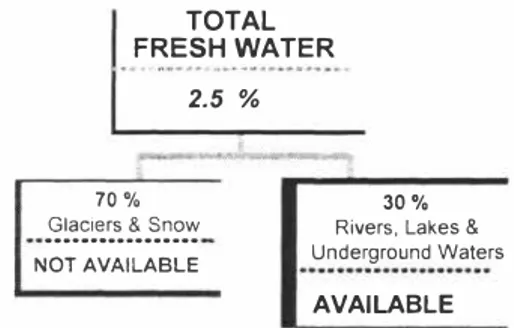
![Figure 3 shows the main biological processes presents in the phyto-depuration treatment plants [2, 5, 6, 12, 16]](https://thumb-eu.123doks.com/thumbv2/5dokorg/3690688.46028/4.649.102.622.486.624/figure-shows-biological-processes-presents-depuration-treatment-plants.webp)
